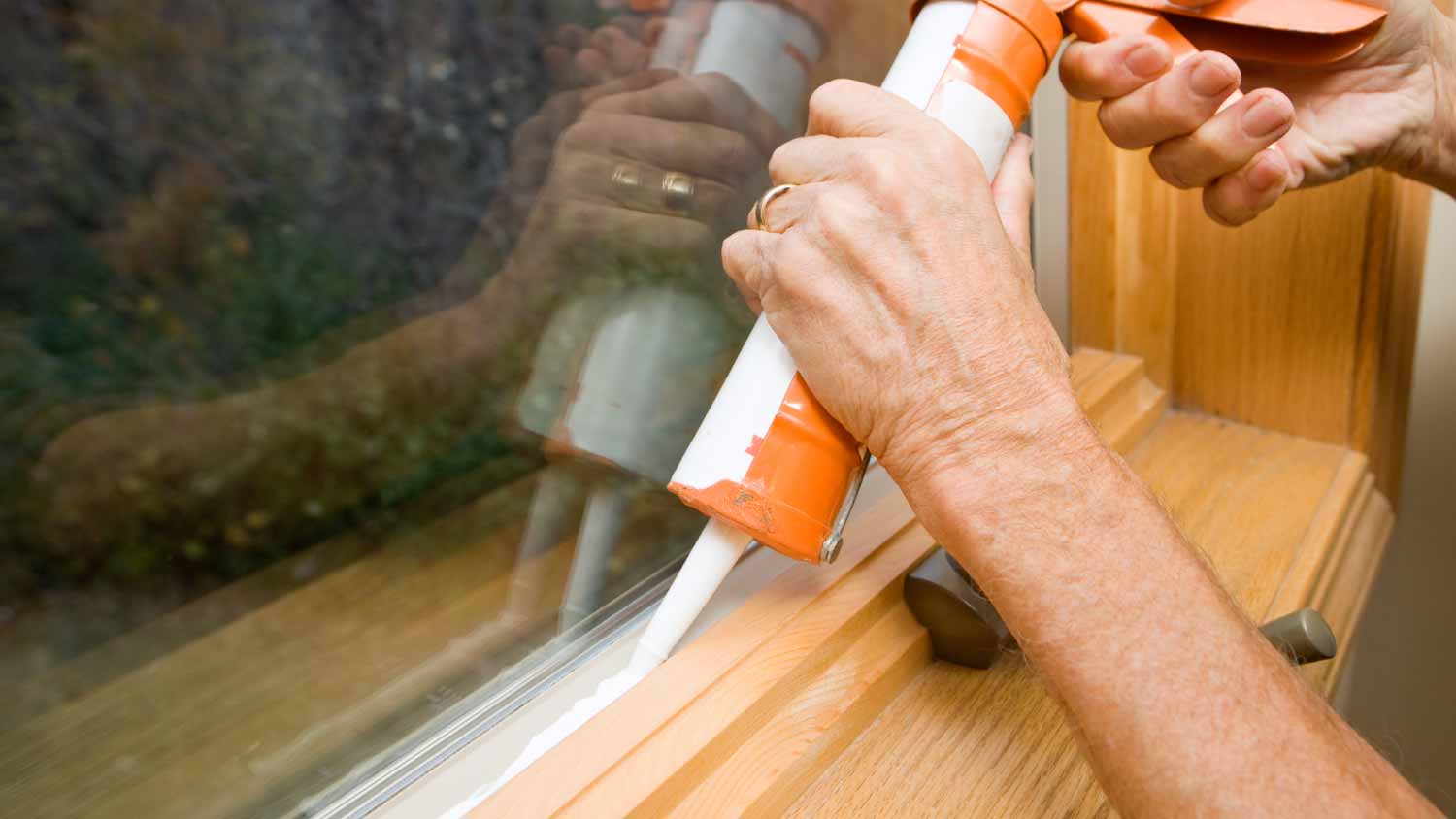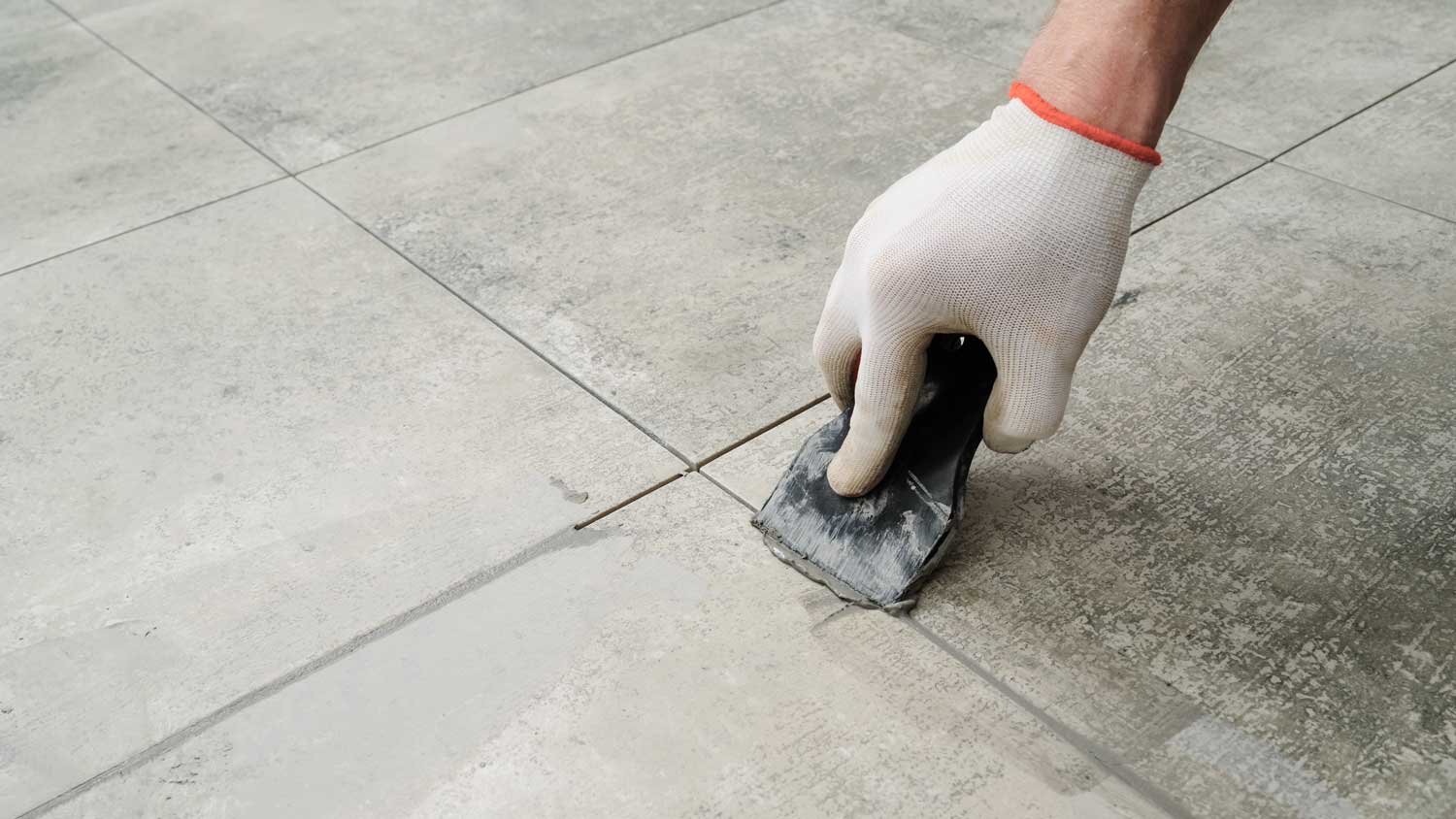
Whether it’s on your floor, walls, or shower, ceramic tile can add style to your space. So, how much does ceramic tile installation cost? Let’s break it down.
Fill in the gaps with some caulk knowledge


Sanded caulk has a gritty texture, while unsanded caulk is smooth.
Unsanded caulk is best when you’re filling large joints or gaps.
If a smooth finish is desired for backsplashes or baseboards, choose unsanded caulk.
Sanded caulk is durable, but unsanded caulk is flexible for areas with movement.
When it comes to sealing and finishing home improvement projects, understanding the differences between sanded versus unsanded caulk can significantly impact the final outcome. Whether you're remodeling your bathroom, kitchen, or touching up baseboards, choosing the right type of caulk is crucial for durability, aesthetics, and functionality. Let’s explore the key differences between sanded and unsanded caulk so you can decide which one is best for your project’s requirements.
Sanded caulk contains fine sand particles, giving it a gritty texture, while unsanded caulk is smooth and free of any abrasive materials. This fundamental difference means that sanded caulk is often used where a textured adhesion and moisture-resistance are needed, while unsanded caulk is ideal for smooth surfaces requiring a clean finish. Understanding these key distinctions will help you select the right product for your project.
Sanded caulk is a type of sealant mixed with fine sand particles, providing a rough texture that can match or complement grout lines. This texture makes it particularly useful in areas where a seamless look is desired between tiles or along surfaces where grout is present.
| Pros | Cons |
|---|---|
| Matches grout lines | Challenging to apply |
| Fills large gaps | Less flexible |
| Durable | Prone to cracks |
Best For
Filling and sealing large joints and seams
Use in tiled showers and bathroom floors
Areas where sanded grout has been used
One of the significant advantages of sanded caulk is its ability to blend seamlessly with and further support sanded grout. This makes it an excellent choice for projects like caulking your shower, where surfaces are moist and you want a consistent look across tiled surfaces.
The sanded texture helps fill larger gaps, making it suitable for use in joints with wider widths. Its durability in high-traffic areas is also noteworthy, as it can withstand daily wear and tear more effectively than some alternatives.
Despite its benefits, sanded caulk has some drawbacks. Its gritty texture can make it more challenging to apply smoothly, requiring either careful attention and skill during application or the help of a local caulking pro to avoid an uneven finish.
Additionally, sanded caulk tends to be less flexible, which can lead to cracking over time, especially in areas with significant movement or temperature fluctuations.

Unsanded caulk, as the name suggests, is free of any abrasive particles, resulting in a smooth, pliable consistency. This type of caulk is often used for applications requiring a clean, finished appearance without any visible texture.
| Pros | Cons |
|---|---|
| Smooth finish | Small gaps only |
| Flexible | Less durable |
| Easy to apply | May shrink over time |
Best For
Sealing small joints and gaps
Use in areas with significant movement
Areas where a smooth look is needed, such as baseboards, backsplashes, and countertops
Unsanded caulk's smooth finish makes it incredibly easy to apply and tool into place, providing a clean and professional look even for DIY caulkers. Its flexibility also allows it to accommodate minor movements and expansions, making it ideal for areas that experience temperature fluctuations or settling. This makes it a preferred choice for sealing edges around sinks, kitchen backsplashes, and baseboards, where a seamless appearance is essential.
The thinner consistency of unsanded caulk can be a disadvantage when dealing with larger gaps or joints. It may not fill these spaces effectively, potentially leading to gaps or insufficient sealing. Additionally, unsanded caulk may not be as durable in high-traffic areas, as it lacks the grit needed to withstand wear and tear.
Choosing between sanded and unsanded caulk depends on several factors, including the specific requirements of your project and the surfaces you're working with. Understanding how each type of caulk measures up in terms of key qualities will help you make an informed decision.
In terms of durability, sanded caulk often has the upper hand in high-traffic areas. The addition of sand particles gives it a robust texture that can withstand physical wear better than unsanded caulk. However, unsanded caulk offers excellent flexibility, which can be beneficial in areas that experience movement or settling. Choosing the right type of caulk depends on whether durability or flexibility is more important for your project.
Moisture resistance is a critical factor, especially in bathrooms and kitchens. While sanded caulk adheres well initially to wet surfaces, unsanded caulk is generally considered more moisture-resistant. This makes it ideal for moist areas such as showers and around sinks. Its smooth finish creates a watertight seal that prevents moisture penetration.
Sanded caulk, while still water-resistant, may not perform as well in consistently damp environments, as the sand particles can create tiny voids that allow moisture to seep through over time.
Unsanded caulk is typically easier to apply due to its smooth, pliable consistency. It can be easily tooled into joints and gaps, providing a clean, professional finish. Sanded caulk, on the other hand, requires more skill to apply evenly due to its gritty texture. For DIY enthusiasts and those seeking an easy application process, unsanded caulk may be the preferred choice.
When it comes to appearance, the choice between sanded and unsanded caulk depends on the desired finish. Sanded caulk provides a textured look making caulk and grout lines blend together well. This makes it an excellent choice for tiled surfaces. Unsanded caulk, with its smooth finish, offers a more polished appearance suitable for visible joints and gaps. Consider the overall aesthetic of your project when deciding between the two.
In terms of versatility, unsanded caulk is generally more adaptable to various applications. Its flexible, smooth finish allows it to be used in a wide range of settings, from bathrooms to kitchens and beyond. Sanded caulk, while effective in specific applications, may not offer the same level of versatility due to its gritty texture and limited flexibility. For projects requiring a high degree of versatility, unsanded caulk may be the better option.
Sanded caulk is the clear winner when it comes to use over grout. Its textured finish matches most grout lines, creating a seamless transition between tiles and caulk. This makes it the ideal choice for tiled surfaces where a consistent appearance is desired. Unsanded caulk, while smooth and flexible, may not provide the same cohesive look in grout applications.
When it comes to sealing large gaps, sanded caulk is the better choice. Its thicker consistency and sand particles allow it to fill and bridge larger spaces effectively. Unsanded caulk, with its thinner consistency, may not provide the same level of coverage and sealing for substantial gaps that are more than ⅛ inch in width. Consider the size of the gaps you're dealing with when choosing between the two.
Cost can be a deciding factor when choosing between sanded and unsanded caulk. Generally, unsanded caulk tends to be more affordable, making it a budget-friendly option for a variety of applications. Sanded caulk, with its added grit and texture, may be slightly more expensive but offers specific benefits that justify the cost in certain projects. Consider your budget and project requirements when making a decision.
From average costs to expert advice, get all the answers you need to get your job done.

Whether it’s on your floor, walls, or shower, ceramic tile can add style to your space. So, how much does ceramic tile installation cost? Let’s break it down.

Discover the average cost of grout repair, key price factors, and tips to save. Get expert advice to plan your grout repair project with confidence.

Damaged tiles should be fixed right away. In this guide, find out all of the different factors that affect your tile repair cost.

When you're getting ready to tackle a tile installation, you need to know how to tile inside corners. Read this guide to learn how.

Caulk and sealant are both helpful for closing gaps, but they aren’t the same thing. Find out whether caulk versus sealant is a better choice for your project.

Can you tile over tile? Yes—if you prep right. Learn how to prep, choose adhesive, and avoid common mistakes for a successful tile-over-tile project.